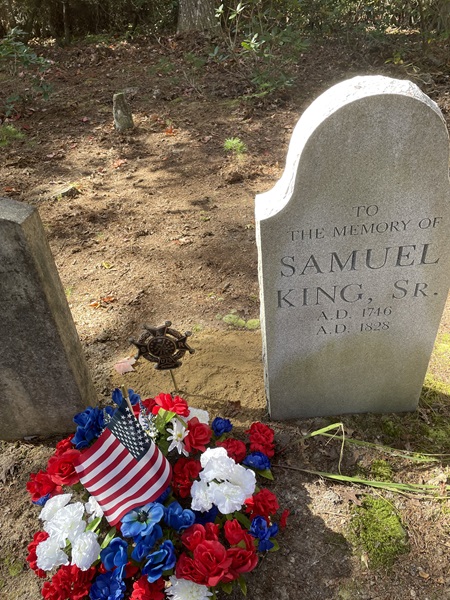Samuel KING Sr
SAR Patriot #:
P-230114
The following information was assembled from numerous sources and cannot be used directly as proof of Qualifying Service or Lineage.
It is considered a research aid and is intended to assist in locating sources that can be used as proof.
State of Service: VA
Qualifying Service: Private / Civil Service
DAR #: A064771
Birth: 1748 / / Ireland
Death: 1828 / Buncombe / NC
Qualifying Service Description:
- He served as a Juror.
- He served as a Private in the companies of Captains Thomas Lucas and Peter Bryan, 11th Virginia Regiment, commanded by Colonel David Morgan.
Additional References:
- Newton, Hedy Hughes,Rutherford County, North Carolina, Abstracts of Minutes Court of Pleas and Quarter Sessions, 1779-1786,North Carolina. Ellenboro: self-published, 1974, pg 5
- Compiled Service Records of Soldiers Who Served in the American Army During the Revolutionary War. Micropublication M881, roll 1070. Washington: National Archives.
- Georgia Society, NSDAR, Histories of Revolutionary Soldiers - Historical Register of Virginians in the Revolution, pg 447
Spouse: Elizabeth Underwood Davenport
Children: Jonathan; Samuel; Benjamin; Joseph; Elizabeth;
Members Who Share This Ancestor
| Date Approved | Society | ACN | SAR Member Info | Lineage via Child | View Application Detail | |
|---|---|---|---|---|---|---|
| 1972-02-24 | FL | Unassigned | Joseph Allen Cowart Jr (102832) | Joseph | ||
| 1988-12-28 | FL | 222487 | Dean Pezzeca (131429) | Joseph | ||
| 1995-03-23 | TX | 206267 | Oran Jay Dorsey Jr (144277) | Joseph | ||
| 1998-01-26 | TX | 200245 | John Alfred Webb Jr (149690) | Samuel | ||
| 1999-08-23 | TX | 4542 | Steve Ross Webb (152343) | Samuel | ||
| 2000-01-14 | VA | 5466 | William Eugene Bell (153051) | Jonathan | ||
| 2001-01-17 | VA | 8210 | Keith Whitman Bell (155021) | Jonathan | ||
| 2001-06-25 | NC | 9688 | Gary Roland King (156093) | Samuel | ||
| 2003-06-19 | FL | 16451 | Scott Greggory King (160556) | Samuel | ||
| 2004-03-25 | NC | 19083 | Lewis Andrew King (162459) | Samuel | ||
| 2006-05-24 | GA | 24182 | Charles Franklin Hyder (163481) | Joseph | ||
| 2006-06-09 | VA | 25659 | Scott Alexander Bell (167214) | Jonathan | ||
| 2006-11-09 | GA | 26435 | Michael Alexander Cain (165999) | Joseph | ||
| 2007-09-24 | NC | 29401 | Brian Duane McCall (170020) | Samuel | ||
| 2012-07-24 | NC | 45701 | Thomas Fay Helton (184267) | Jonathan | ||
| 2019-05-03 | AK | 85454 | Samuel Paul McGill (206267) | Samuel | ||
| 2021-03-19 | GA | 95906 | Glen Jerome Cheatham (218619) | Joseph | ||
| 2022-04-01 | NY | 99117 | Robert D. Ballard (216467) | Jonathan | ||
| 2022-04-01 | NY | 99118 | Terry L. Ballard (215199) | Jonathan | ||
| 2023-01-10 | CA | 106083 | Personal Membership Information Restriction (224864) |
Location:
/ Henderson / NC / USA
Find A Grave Cemetery #:
Marker Type:
SAR Stake
SAR Grave Dedication Date:
02 Nov 2024
Comments:
Image taken and provided with permsiion from compatriot Craig Isaacson (NC) member 141694
Directions to Cemetery / Gravesite:
From Hendersonville, take Willow Rd. South approximately one and one-half miles, turn right onto Finley Cove Rd. Cemetery is on right. There are about 27 graves marked with fieldstones. Samuel King Family Cemetery is located in the center of a subdivision and is deeded to the Samuel King family
